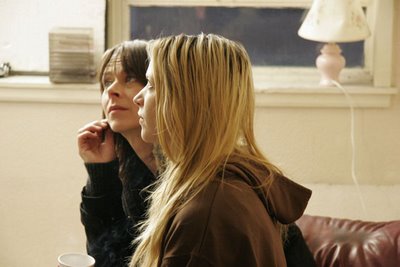
Finally managed to catch The Departed before it disappeared from the big screen. I'm not sure what I think of it. Having seen and enjoyed Infernal Affairs in the cinema, there was nothing quite as startling in Scorsese's film.
Having read several reviews, I think I'm with J. Hoberman in Village Voice. The Departed is much longer than Infernal Affairs but it doesn't do a great deal more. It is, of course, extremely well-made and very enjoyable as a genre film, but tight and lean it isn't. It also lacks , for me, real interest in characters. I was prompted to think of a movie I love a great deal -- Donnie Brasco (1997) in which Johnny Depp plays the undercover cop and Al Pacino the low grade mafioso who becomes his surrogate father. By packing The Departed with the likes of Jack Nicholson and Martin Sheen, Scorsese seems to be going for depth in the playing, but Nicholson can't for me achieve the force of Pacino and Depp is leagues ahead of Matt Damon, DiCaprio (one of his better performances) and Mark Wahlberg (an odd and well received performance). I worry that it is my own old man's view and also possibly my arthouse snobbery, but no-one in The Departed gets within ten miles of Tony Leung, so cool he is frozen.
I think Marty got caught between two stools with this movie. It should have been shorter, tighter and more generic without big stars or more psychologically profound/more melodramatic (I did like Vera Farmiga, whose part could have been expanded).
So, I enjoyed the film but it could have been more. Rather like Michael Mann with Miami Vice, Scorsese knows so much that when he doesn't blow your socks right off it is a little disappointing. It is probably flying in the face of all reason and most polls, but I found both Gangs of New York and The Aviator to be more exciting in terms of watching a great filmmaker stretch himself.



